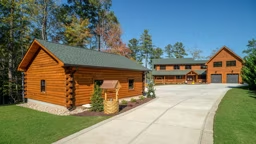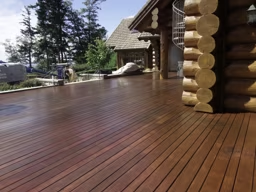
Winter has arrived. Is your home ready to battle the elements? Air and water infiltration are dangerous enemies. Defend against them on all fronts and you'll stop Old Man Winter from turning your fortress of warmth into an ice castle. It only takes a little time to check for chinks in your home's armor but fixing those problems well in advance of cold weather will make all the difference.
Fill Checks
Start by studying your logs. Walk the perimeter of the house and look for checks. They may appear harmless and some log home owners believe these natural cracks give their logs character, but dead insects, bird droppings and dirt can collect in checks. Not every check needs to be filled. Caulk those on the upper curvature of the logs or those that spiral downward. If you can't get backer rod into the crack, don't bother caulking it. The caulking material will get squeezed out. Cracks on log surfaces 1/4 inch or more in size should be caulked to keep water from running into the opening.
Stop Rot and Mildew
Look for signs of rot and mildew during your inspection. If you find them, you've got moisture coming in somewhere. You may need to replace the wood. If (rot) hasn't gone all the way through there are some wood epoxies that can be shaped and made round to get the same profile as the log. Dealing with rot in structural logs is more complicated. You may have to put the home on jacks and have a professional remove rotten logs. Impel rods can be inserted into logs to kill fungi creating the rot. You'll also want to check for insect infestation. Problems could arise if you have Powder-post beatles and you have coatings on your logs. To apply borate products you need bare wood. However, exterminators may be able to inject pesticide solutions into holes to get rid of the beatles.
Protect Your Finish
Check your logs for areas of bare wood; then determine why the stain has eroded. You might have to trim overgrown vegetation or repair broken gutters. Signs may point to other problems. If your home’s exterior looks dull, it may not be repelling water. Spray water on your logs to see if it beads up or soaks in. If it beads up, your finish is doing its job. If it is absorbed, it's not. Before winter arrives, re-seal problem areas. Check weather conditions and temperatures before you begin work: the sealant will not fully penetrate if the wood surface is too hot or cold. For most coatings, the surface temperature of the logs should range from 45 to 90 degrees. Make sure stains and caulking material are compatible and clean your logs before application. If you notice tears or loss of adhesion in caulking or chinking, repairs need to be made.












